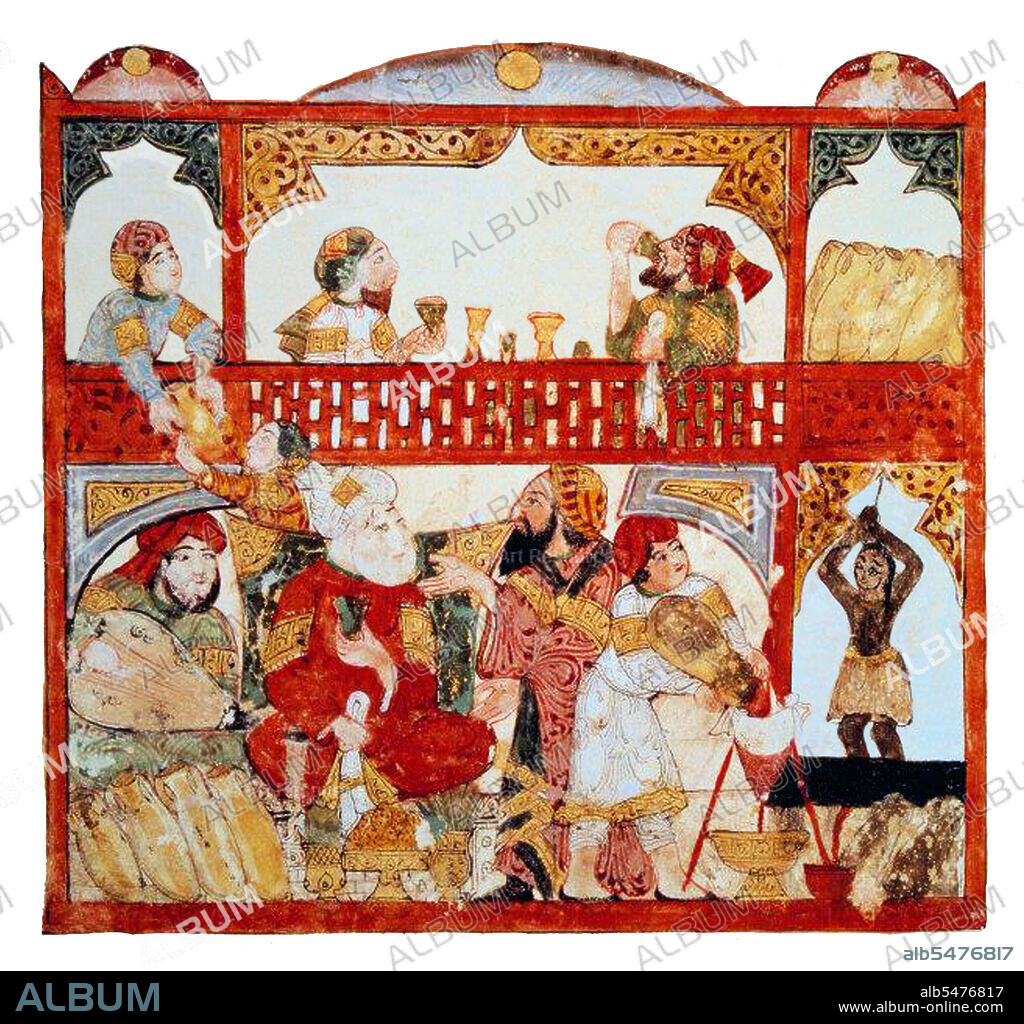alb5476817
Detail of a tavern with feasting upstairs, music and food preparation downstairs. On the right, a man pulls a fan.

|
Añadir a otro lightbox |
|
Añadir a otro lightbox |



¿Ya tienes cuenta? Iniciar sesión
¿No tienes cuenta? Regístrate
Compra esta imagen.
Selecciona el uso:

Título:
Detail of a tavern with feasting upstairs, music and food preparation downstairs. On the right, a man pulls a fan.
Descripción:
Traducción automática: Yahya ibn Mahmod al-Wasiti fue un artista árabe islámico del siglo XIII. Al-Wasiti nació en Wasit, en el sur de Irak. Se destacó por sus ilustraciones del Maqam de al-Hariri. Maqama (literalmente 'asambleas') es un género literario árabe (originalmente) de prosa rimada con intervalos de poesía en los que la extravagancia retórica es conspicua. Se dice que el autor del siglo X, Badi 'al-Zaman al-Hamadhani, inventó la forma, que fue ampliada por al-Hariri de Basora en el siglo siguiente. El maqamat de ambos autores se centra en figuras tramposas cuyas andanzas y hazañas al hablar ante asambleas de poderosos son transmitidas por un narrador. Los manuscritos del Maqamat de al-Hariri, anécdotas de un vagabundo pícaro Abu Zayd de Saruj, se ilustraban con frecuencia con miniaturas.
Yahya ibn Mahmod al-Wasiti was a 13th-century Arab Islamic artist. Al-Wasiti was born in Wasit in southern Iraq. He was noted for his illustrations of the Maqam of al-Hariri. Maqama (literally 'assemblies') are an (originally) Arabic literary genre of rhymed prose with intervals of poetry in which rhetorical extravagance is conspicuous. The 10th century author Badi' al-Zaman al-Hamadhani is said to have invented the form, which was extended by al-Hariri of Basra in the next century. Both authors' maqamat center on trickster figures whose wanderings and exploits in speaking to assemblies of the powerful are conveyed by a narrator. Manuscripts of al-Hariri's Maqamat, anecdotes of a roguish wanderer Abu Zayd from Saruj, were frequently illustrated with miniatures.
Crédito:
Album / Pictures From History/Universal Images Group
Autorizaciones:
Tamaño imagen:
4331 x 4105 px | 50.9 MB
Tamaño impresión:
36.7 x 34.8 cm | 14.4 x 13.7 in (300 dpi)
Palabras clave:
ARABE • ARABES • ART • ARTE • ARTES • ASIA • ASIATICO • DIVERSION • ENTRETENIMIENTO • ESTILO • HISTORIA • HISTORICO • INSTRUMENTOS MUSICALES • IRAK • IRAQUI • ISLAM • ISLAMICAS • ISLÁMICO • ISLAMICOS • MINIADA • MODA • MUSULMAN • MUSULMANA • PINTURA • RELIGION • TURBANTE • YAHYA IBN MAHMUD AL-WASITI


 Pinterest
Pinterest Twitter
Twitter Facebook
Facebook Copiar enlace
Copiar enlace Email
Email
